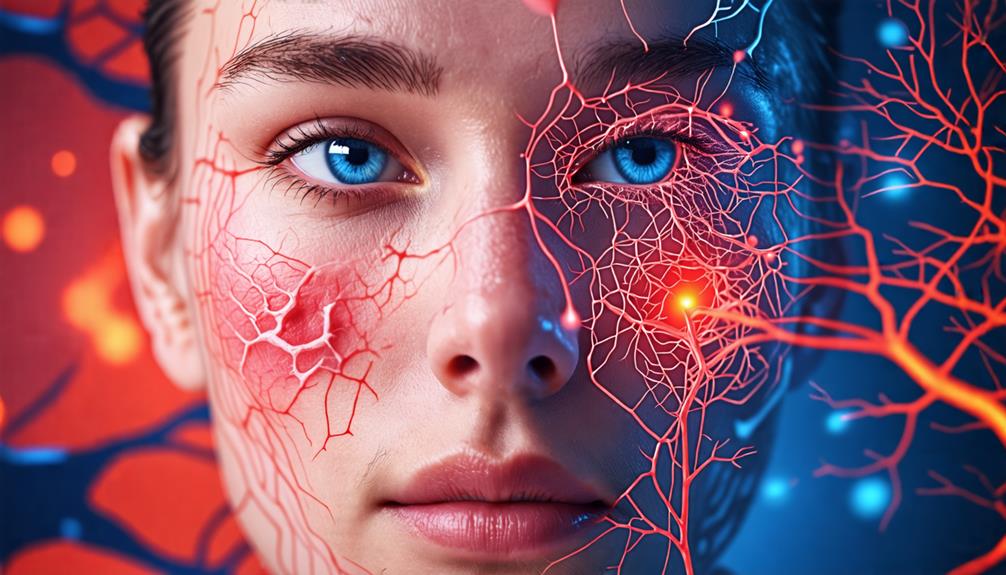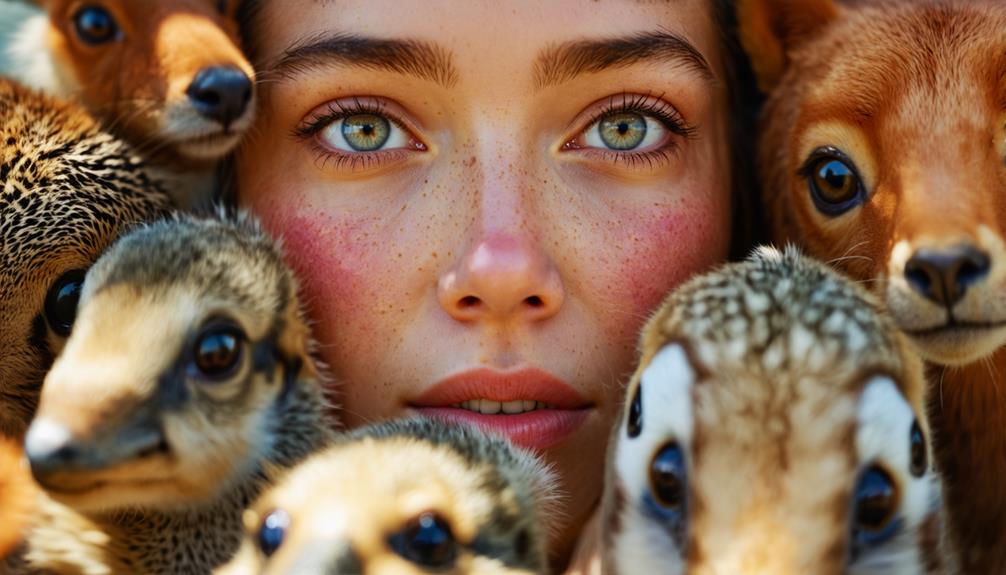Have you ever wondered why your face turns red when you're embarrassed? You're experiencing a unique physiological response that sets humans apart from most other species. Blushing, an involuntary reaction triggered by emotions, is a fascinating aspect of human biology and social interaction. It's not just a quirk of nature; this ability serves important evolutionary and social purposes. As you consider the rarity of blushing in the animal kingdom, you might find yourself curious about the science behind this phenomenon and its impact on human relationships. What secrets does this seemingly simple reaction hold?
Key Takeaways
- Humans are unique among primates in their ability to visibly blush on the face, ears, and neck.
- Blushing in humans involves complex neural and vascular mechanisms not observed in other species.
- The capacity to blush reflects advanced social awareness and emotional complexity distinctive to human beings.
- Blushing serves as a non-verbal communication tool for conveying sincerity and vulnerability in social interactions.
The Science Behind Blushing

Blushing, a fascinating physiological phenomenon, stems from a complex interplay between your nervous system and facial blood vessels. When you experience certain emotional states, particularly embarrassment, your nervous system triggers a relaxation of facial muscles and dilation of blood vessels. This involuntary reaction increases blood flow to your facial skin, resulting in the characteristic redness of blushing.
The duration of your blush can vary from seconds to minutes, depending on the intensity of the emotional trigger. Notably, this physiological mechanism is closely tied to your social awareness, reflecting the unique human capacity for complex emotions in social situations.
Research suggests that blushing can actually enhance your perceived trustworthiness, as it signals vulnerability and honesty to others. Despite its potential benefits, you'll find it challenging to fake or control this involuntary reaction, making blushing a genuine expression of your emotional state.
Evolutionary Purpose of Blushing
You'll often find experts puzzling over the evolutionary purpose of blushing, a uniquely human trait that's intrigued scientists for centuries.
Charles Darwin himself believed this physiological response offered an evolutionary advantage linked to social awareness and community acceptance. While its exact purpose remains unclear, blushing may play a vital role in restoring social harmony after a faux pas. By signaling vulnerability and honesty, it can foster empathy and understanding from others, potentially strengthening interpersonal relationships.
As a uniquely human expression, blushing reflects a complex interplay of emotional states and social cognition. It's often seen as an admission of guilt or embarrassment, which may help engender trust within social groups.
This involuntary reaction could have provided our ancestors with a non-verbal way to communicate sincerity and maintain social bonds, ultimately contributing to the survival of our highly cooperative species.
Social Implications of Blushing

Turning bright red in social situations can greatly impact your interactions and relationships with others. Blushing serves as a non-verbal signal of vulnerability, often eliciting empathy and understanding from those around you. This physiological response can increase your social acceptance, especially when you've made a social error.
The involuntary nature of blushing sets it apart from other emotional expressions, making it a unique and genuine signal. It can influence your interpersonal relationships by:
- Fostering connections through shared emotional experiences
- Signaling your awareness of social scrutiny
- Mitigating negative perceptions following social missteps
Understanding the social implications of blushing can enhance your emotional intelligence and empathy. By recognizing this phenomenon in yourself and others, you'll be better equipped to navigate various social settings and promote healthier interactions.
Embrace your ability to blush as a powerful tool for building stronger connections with those around you.
Conclusion
You're part of a unique club when you blush. It's a distinctly human trait that sets you apart from most other species.
Your ability to turn red isn't just a quirk; it's a powerful social tool. When you blush, you're sending silent signals of honesty and vulnerability.
It's nature's way of helping you connect with others, fostering empathy and trust.
So next time you feel your cheeks warming, remember: you're showcasing a truly human superpower.

Leave a Reply